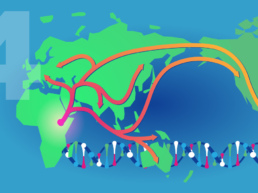Economists are usually, in the main, a reasonable sort. But their persistent inability to speak uniformly on critical matters of global interest or the inability to approximate the final value of an economic variable is beginning to wear thin on policy makers who depend so heavily on their expertise. Take the current rage of negative interest rate; economists had emphatically said it could not (or at least should not) happen. Yet rich-world central banks are starting to impose negative interest rates. In June 2014 the European Central Bank (ECB) began paying -0.1% on deposits held in its vault, before lowering the rate to -0.2% in September. Denmark and Switzerland have negative rates, as well. And on February 12th the Swedes joined the party: the Riksbank cut its benchmark interest rate to -0.1%. Central bankers hope that moving into negative territory will boost their economies in a number of ways. Will it?
When an economy is struggling, it is standard practice for a central bank to cut interest rates. That makes saving less attractive and borrowing more so, boosting the amount of money being spent and kick-starting an economic recovery. But very low inflation can make a central bank’s life harder. Many big economies are now experiencing “deflation”, where prices are falling. In the euro zone, for instance, the main interest rate is at 0.05% but the “real” (or adjusted for inflation) interest rate is considerably higher, at 0.65%, because euro-area inflation has dropped into negative territory at -0.6%. If deflation gets worse then real interest rates will rise even more, choking off recovery rather than giving it a lift. Desperate to avoid this trap, ever more European central bankers have waded into the unfamiliar territory of negative interest rates.
Some economists consider this dangerous. Some reckon it shouldn’t be possible at all. Since cash carries an implicit rate of interest of 0%, consumers might well respond to negative rates by withdrawing money from banks and stuffing it in their mattresses. The resulting shortage of loanable funds would push interest rates up (though perhaps not before causing an economy-crushing bank run). Central banks are now betting that savers won’t run for the hills—after all, storing money is costly and risky. But negative rates may create financial instability in other ways. Banks may be reluctant to pass negative rates on to depositors, lest they lose customers to other financial institutions (or the mattress). But those same banks may earn returns on their assets which vary with interest rates. Building societies, a type of mutually owned bank in Britain, are particularly dependent on their deposits, so they are reluctant to reduce deposit rates below zero. But they have assets, like mortgages, with interest payments contractually linked to the interest rate. For institutions in that position, negative rates would lead to lower profits and, eventually, to erosion of capital. Damaged financial institutions are unlikely to power a rapid recovery.
Whether other effects might prove more benign remains to be seen. The boldness of the move to negative interest rates could convince consumers that central banks are serious about beating deflation—or lead them to conclude that even zero cannot keep inflation and interest rates from tumbling. The best hope for success, however, lies in foreign-exchange markets. Negative rates might send investors in search of better returns abroad, leading to depreciation of the currency. That would raise the price of imports, helping to combat deflation and giving a growth-enhancing boost to exporters. Since the ECB introduced negative deposit rates the euro has fallen against the dollar by nearly 20%. It is no coincidence that the Danish central bank has pursued negative interest rates so zealously—its sole objective is a fixed exchange rate with the plunging euro. If currencies fall by enough, then negative rates might just pay off—provided that sinking prices elsewhere don’t lead ever more of the global economy to take the plunge into sub-zero waters.



